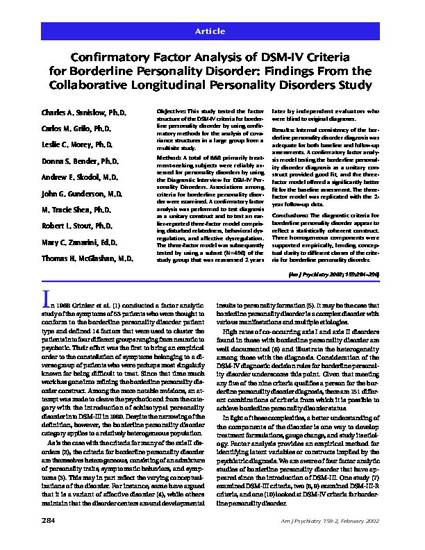
Objective: This study tested the factor structure of the DSM-IV criteria for borderline personality disorder by using confirmatory methods for the analysis of covariance structures in a large group from a multisite study.
Method: A total of 668 primarily treatment-seeking subjects were reliably assessed for personality disorders by using the Diagnostic Interview for DSM-IV Personality Disorders. Associations among criteria for borderline personality disorder were examined. A confirmatory factor analysis was performed to test diagnosis as a unitary construct and to test an earlier-reported three-factor model comprising disturbed relatedness, behavioral dysregulation, and affective dysregulation. The three-factor model was subsequently tested by using a subset (N=498) of the study group that was reassessed 2 years later by independent evaluators who were blind to original diagnoses.
Results: Internal consistency of the borderline personality disorder diagnosis was adequate for both baseline and follow-up assessments. A confirmatory factor analysis model testing the borderline personality disorder diagnosis as a unitary construct provided good fit, and the three-factor model offered a significantly better fit for the baseline assessment. The three-factor model was replicated with the 2-year follow-up data.
Conclusions: The diagnostic criteria for borderline personality disorder appear to reflect a statistically coherent construct. Three homogeneous components were supported empirically, lending conceptual clarity to different classes of the criteria for borderline personality disorder.
- CLPS,
- Collaborative Longitudinal Personality Study,
- Factor Analysis,
- Confirmatory Factor Analysis,
- AMOS,
- DSM,
- DSM-IV,
- Axis I,
- Axis II,
- Personality Disorders,
- Borderline,
- Schizotypal,
- Avoidant,
- Obsessive-Compulsive
